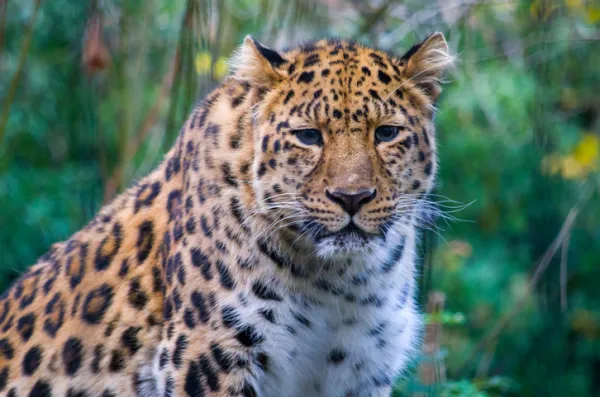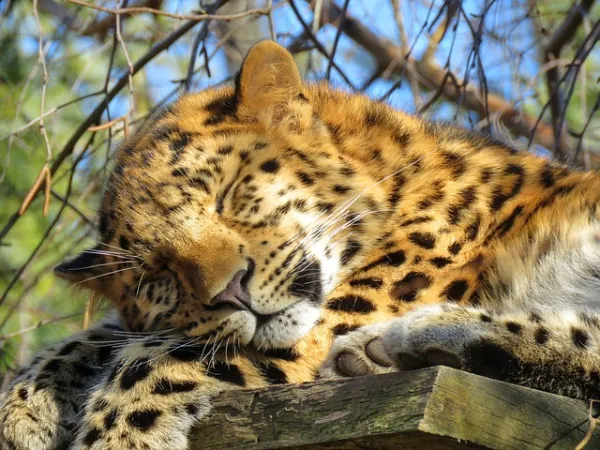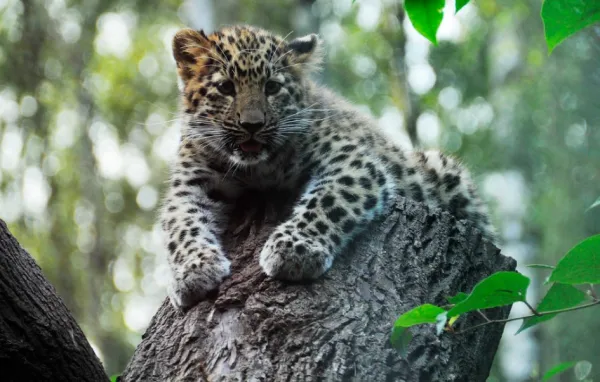In the far southeast of Russia lies a unique landscape — the only part of this vast country that escaped the last Ice Age without being covered by glaciers. This rare circumstance preserved an extraordinary biodiversity where remarkable mammals such as the Himalayan black bear, the Siberian tiger, and one of the most elusive big cats in the world, the Amur leopard (Panthera pardus orientalis), still survive.
By the 1960s, the Amur leopard had been pushed to the brink of extinction, with fewer than 30 individuals left in the wild. Recovery seemed almost impossible. Today, thanks to intensive conservation efforts, the wild population has increased to around 90 adults — including 40 breeding females — and at least 21 cubs, offering hope for the species’ future.

The Amur leopard is widely regarded as the rarest leopard subspecies and one of the least-known big cats on Earth. Locals in the Russian Far East call it the “spotted ghost” because of its secretive, nocturnal nature. Spotting one in its natural Siberian forest habitat is extremely difficult.
Winter-ready coat: The Amur leopard’s fur is much longer than that of other leopard subspecies — about 2.5 cm (1 in) in summer and up to 7 cm (2.75 in) in winter — protecting it from the harsh, subzero Siberian winters.
Color and rosettes: Its coat is a rich golden-orange with large, widely spaced black rosettes, giving it a distinctive appearance.
Build: Slightly smaller than African leopards, with longer legs adapted for moving through deep snow.
The core habitat of the Amur leopard is the Sikhote-Alin Biosphere Reserve in Russia’s Primorsky Krai. This fragile ecosystem lies in the Pacific coastal taiga, straddling the Russian-Chinese border. Small numbers have also been recorded in nearby forests of northern North Korea.
Due to habitat loss and fragmentation, many Amur leopards now live in managed environments such as zoos and breeding centers in Russia, Europe, and the United States, where they are part of carefully coordinated captive breeding programs.

As a top carnivorous predator, the Amur leopard feeds primarily on:
Roe deer, sika deer, and musk deer
Hares and other small mammals
Ground-dwelling birds such as pheasants
It is a solitary ambush hunter, relying on stealth and explosive speed to capture prey.
Amur leopards are territorial and generally polygynous.
Breeding territories: Females maintain a defined breeding range, while males roam widely to find mates.
Gestation: Around 90–105 days
Litter size: Typically 1–4 cubs
Parental care: Females raise the cubs alone until they become independent at about two years old.
According to the IUCN Red List, the Amur leopard is classified as Critically Endangered (CR). Major threats include:
Inbreeding depression
With such a tiny, isolated population, genetic diversity is extremely low. This leads to reduced fertility, higher cub mortality, and increased vulnerability to disease.
Habitat degradation and fragmentation
Logging, road building, and agriculture cut the forest into disconnected patches, making it harder for leopards to find mates and prey.
Human activities
Poaching for the fur trade remains one of the biggest threats. Leopard skins fetch high prices on the black market, and some are also killed for their meat.
Deliberate forest fires and resource extraction further degrade their environment.

Saving the Amur leopard requires coordinated action at local, national, and international levels:
Protected areas
Creation and expansion of reserves such as Land of the Leopard National Park near Vladivostok, which connects important habitats along the Russian-Chinese border.
Cross-border cooperation
Russia, China, and North Korea working together to monitor and protect leopards, since they roam freely across political boundaries.
Captive breeding & reintroduction
Carefully managed genetic programs in zoos to maintain diversity, with future plans to reintroduce individuals into the wild.
Anti-poaching enforcement
Increased ranger patrols and stricter penalties for illegal hunting.
Public awareness & ecotourism
Education campaigns and responsible wildlife tourism help raise funds and encourage local communities to value living leopards more than their skins.
The Amur leopard is not only a symbol of the Russian Far East’s wild beauty but also a crucial part of the region’s ecological balance. Protecting this rare predator means safeguarding an entire ecosystem — and ensuring that the “spotted ghost” continues to roam the forests for generations to come.
Bibliography
Escarda, A. (August 30, 2018) The Amur Leopard, Queen Again in Its Taiga. EFE Agency: Verde, Biodiversity.
Gippoliti, S. (2014) Wild Felids in Italian Zoos: History, Management Aspects, Welfare, and Conservation. Italian Society for the History of Fauna (Italy), pp. 1-15.
animal tags: amur leopard
We created this article in conjunction with AI technology, then made sure it was fact-checked and edited by a Animals Top editor.